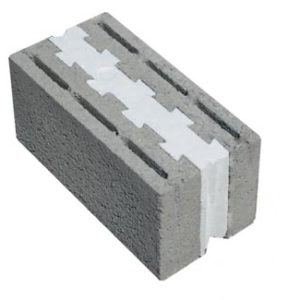The project involves establishing a thermal insulating blocks factory, which will produce and manufacture thermal insulation blocks in various sizes, including 40×20×20 cm and 39×24×19 cm blocks.

The project involves establishing a thermal insulating blocks factory, which will produce and manufacture thermal insulation blocks in various sizes, including 40×20×20 cm and 39×24×19 cm.<br>The importance of this project stems from the continuous demand for thermal insulation blocks and the significant boom in the industrial and housing sectors. With the ongoing urban development and construction expansion, the construction sector increasingly requires thermal insulating blocks. This is expected to drive a growing demand for the factory’s products.<br>Moreover, the raw materials required for production—cement, sand, gravel, and other additives—are widely available across the Sultanate, which enhances the stability and continuity of the production process.<br>The main objective of the project is to meet the needs and requirements of the local market, especially in light of the rapid urban development, while fully utilizing the available resources to support sustainable development.<br>The project will primarily target the local market, specifically construction companies, building contractors, and general contractors. Additionally, it aims to develop the technical and managerial expertise necessary to operate the production lines efficiently, ensuring the project’s long-term sustainability, ability to meet the growing market demand, and competitiveness with other local producers.



Availability of the raw materials required for the production of thermal insulating blocks.
A significant market gap for thermal insulating blocks of various sizes within the Sultanate.
Producing high-quality thermal insulating blocks to compete with local competitors.
Availability of skilled and trained labor.
Availability of a supportive and suitable business environment.
Project Overview
Financial Indicators
Justifications for Establishing the Project
Government Investment Incentives in the Project’s Sector
Target Markets
Key Indicators and Final Results of the Project
Description of the Project and All Its Products / Services
Project Advantages and Production Requirements
Understanding Distribution Channels
Consumer Behavior, Preferences, and Characteristics
Competitors’ Products or Services and Their Strengths and Weaknesses
Nature and Characteristics of the Market
Demand Size for the Product or Service Offered
Available Market Share in the Target Market
Optimal Marketing Approach
Identifying Risks
Impact of Risks on the Project
Risk Prevention Methods
Detailed description of the project’s products
Expected production capacity
Estimation of investment costs
Determination of electricity and water requirements
Determination of the project’s labor requirements
Identification of the project’s material and equipment requirements
Calculation of construction and building costs
Calculation of total capital requirements
Estimation of annual operating costs
Determination of the required working capital
Total investment costs required for the project
Preparation of cash flow statements, income statements, and balance sheets for the first ten years of operation
Estimation of the expected annual revenues based on the specified operational capacities
Determination of the optimal financial structure for the project in light of investors’ capabilities and financing conditions
Financial indicators and sensitivity analysis of the project
Project workforce
Organizational structure
Job responsibilities and descriptions

The construction sector’s GDP contribution in 2016 amounted to 159,641 million SAR, representing 7% of the Kingdom’s total GDP.
The number of construction permits issued in 1437H reached 129,322 permits.
The number of establishments operating in the construction sector reached 26,503 establishments.
The construction and contracting sector accounted for 54% of the total recruited foreign labor in the Kingdom during 2016.
The total land area covered by construction permits issued in 1437H amounted to 437,862,521 square meters.
The total number of floors included in construction permits issued in 1437H reached 346,396 floors.
It is well known that Saudi Arabia’s Vision 2030 aims to diversify the national economy and increase the contribution of non-oil sectors to the country’s GDP. The Kingdom has embarked on this ambitious journey by injecting massive investments into its infrastructure and launching mega-projects to encourage national investments and attract regional and foreign investors.
The construction sector in Saudi Arabia is expected to grow at a compound annual growth rate (CAGR) of 7.8%, reaching SAR 196.2 billion by 2024.